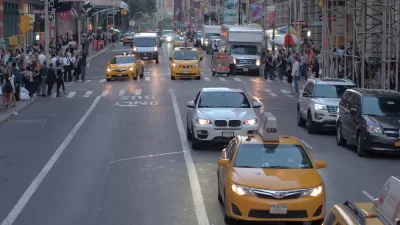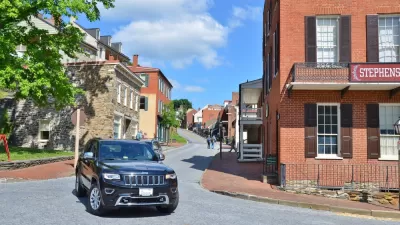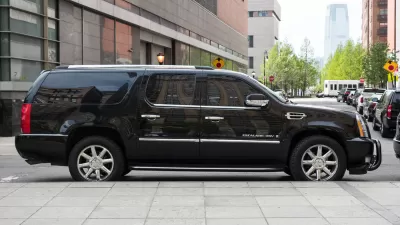A 2015 NHTSA report showed that pedestrians were multiple times more likely to die if struck by SUVs, but that information was neither shared nor acted upon.

The United States has seen a rapid rise in pedestrian deaths, and reporting shows officials at the NHTSA were not forthcoming with key information on one of the causes. "A Detroit Free Press/USA TODAY NETWORK investigation found that the SUV revolution is a key, leading cause of escalating pedestrian deaths nationwide, which are up 46 percent since 2009," Eric D. Lawrence, Nathan Bomey, and Kristi Tanner report for the Detroit Free Press and USA Today. Safety regulators have been aware of this since at least 2015, but didn't move to mitigate this danger or publicize this finding.
In Europe, cars are rated by how dangerous they are for pedestrians, the National Highway Traffic Safety Administration (NHTSA) had announced plans to release similar safety ratings, but that has yet to happen. In the meantime SUV sales have continued to climb, surpassing traditional sedans this year.
People are two to three times more likely to die when hit by tall SUVs than they are when they're hit by typical sedans, the NHTSA found when looking at 12 independent studies. Higher fronts on SUVs mean pedestrians are more likely to go under the wheels of SUVs than they are if they're struck by sedans which have lower bumpers. Pedestrians that are thrown onto the hood of a car are more likely to survive.
FULL STORY: Federal Safety Officials Knew SUV Design Kills Pedestrians and Didn’t Act

Alabama: Trump Terminates Settlements for Black Communities Harmed By Raw Sewage
Trump deemed the landmark civil rights agreement “illegal DEI and environmental justice policy.”

Study: Maui’s Plan to Convert Vacation Rentals to Long-Term Housing Could Cause Nearly $1 Billion Economic Loss
The plan would reduce visitor accommodation by 25% resulting in 1,900 jobs lost.

Why Should We Subsidize Public Transportation?
Many public transit agencies face financial stress due to rising costs, declining fare revenue, and declining subsidies. Transit advocates must provide a strong business case for increasing public transit funding.

Wind Energy on the Rise Despite Federal Policy Reversal
The Trump administration is revoking federal support for renewable energy, but demand for new projects continues unabated.

Passengers Flock to Caltrain After Electrification
The new electric trains are running faster and more reliably, leading to strong ridership growth on the Bay Area rail system.

Texas Churches Rally Behind ‘Yes in God’s Back Yard’ Legislation
Religious leaders want the state to reduce zoning regulations to streamline leasing church-owned land to housing developers.
Urban Design for Planners 1: Software Tools
This six-course series explores essential urban design concepts using open source software and equips planners with the tools they need to participate fully in the urban design process.
Planning for Universal Design
Learn the tools for implementing Universal Design in planning regulations.
Caltrans
Smith Gee Studio
Institute for Housing and Urban Development Studies (IHS)
City of Grandview
Harvard GSD Executive Education
Toledo-Lucas County Plan Commissions
Salt Lake City
NYU Wagner Graduate School of Public Service





























